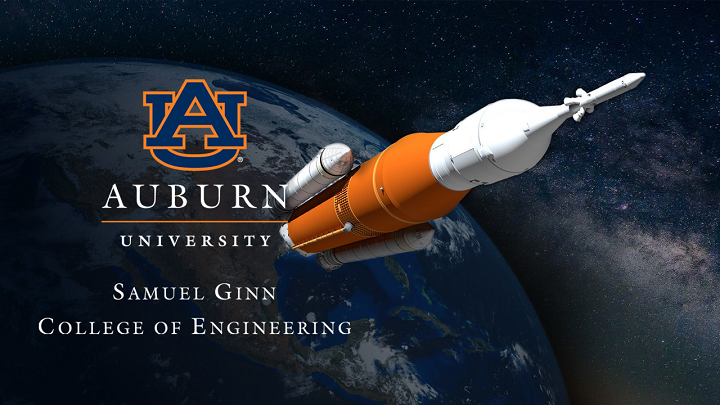
L-R: Auburn University’s John Mason and Patrick Scheuermann, director of NASA’s Marshall Space Flight Center in Huntsville, sign a Space Act Agreement [2015 Image: Auburn University]
Back in 2015, Auburn University and NASA signed a Space Act Agreement for the purposes of exploring and advancing additive manufacturing applications and research together. The university has remained committed to 3D printing, and aerospace, over the years, working with NASA in a public-private partnership to establish its National Center for Additive Manufacturing Excellence (NCAME) two years ago for the purpose of improve the performance of 3D printed parts, respond to workforce development needs in the AM industry, and share research results with collaborators.
Now, the university’s Samuel Ginn College of Engineering has announced that NASA awarded a three-year, $5.2 million contract to NCAME to research and create 3D printing techniques to help improve the performance of liquid rocket engines. The work covered under the contract is part of NASA’s Rapid Analysis and Manufacturing Propulsion Technology (RAMPT) project, and is just the latest development to come out of Auburn’s relationship with NASA’s Marshall Space Flight Center.
“This partnership with Auburn University and industry will help develop improvements for liquid rocket engines, as well as contribute to commercial opportunities. The technologies developed by this team will be made available widely to the private sector, offering more companies the opportunity to use these advanced manufacturing techniques,” said Paul McConnaughey, the Deputy Director of Marshall Space Flight Center.
RAMPT is centered around evolving lightweight, large-scale novel and 3D printing techniques for developing and fabricating regeneratively cooled thrust chamber assemblies for use in liquid rocket engines. NCAME already collaborates with more than 70 academic, government, industry, and non-profit organizations, and will now help support the RAMPT project as it works to create a domestic supply chain and specialized manufacturing technology vendors, which will be used by all government agencies, commercial space companies, and academic institutions.
“For decades, Auburn engineers have been instrumental in helping the U.S. achieve its space exploration goals. This new collaboration between NASA and our additive manufacturing researchers will play a major role in developing advanced rocket engines that will drive long-duration spaceflight, helping our nation achieve its bold vision for the future of space exploration,” said Christopher B. Roberts, the dean of the university’s College of Engineering.
Michael Ares, who works in Media Relations for Auburn University, told 3DPrint.com in an email that the Samuel Ginn College of Engineering is a leader in developing and implementing the kind of AM aerospace technology that Auburn and NASA have also been working on “behind the scenes,” which would allow astronauts on long-duration spaceflights to manufacture spare parts when needed.
“Think about how that would have been helpful on Apollo 13…” Ares told us.
GE Avionics is another Auburn partner that’s taken research jointly conducted with the university all the way to production. Additionally, Alabama’s Governor Kay Ivey announced last week that GE Aviation will invest $50 million to expand the additive manufacturing operation at its Auburn facility. All of this goes to show that when it comes to aerospace 3D printing, it seems like Alabama is the place to be right now.
“This contract is a giant leap towards making Alabama the ‘go to state’ for additive manufacturing. We look forward to growing our partnership with NASA, industry and academia as we support the development of our nation’s next rocket engines,” said Mike Ogles, Director of NASA programs in the Samuel Ginn College of Engineering and the RAMPT Project Manager.
The announcement about the university’s new NASA contract was made at the biannual four-day meeting of ASTM International’s F42 Committee on Additive Manufacturing Technologies, which is hosted by the university at the Auburn Marriott Opelika Resort & Spa at Grand National in Opelika. Nima Shamsaei, the Director of NCAME, will lead Auburn’s team for the RAMPT project as the principal investigator.
Discuss this and other 3D printing topics at 3DPrintBoard.com or share your thoughts below.


53 Replies to “Auburn University Receives NASA Contract to Develop 3D Printing Techniques to Improve Liquid Rocket Engines”
Comments are closed.